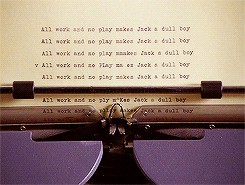It’s the time of the year: everyone’s humming carols, organizing cookie swaps, and re-watching their favorite classic Christmas movies. During a screening of Home Alone here at Wrike HQ, we couldn’t help but notice the young protagonist's stellar project management skills, and started taking notes.
.So order a cheese pizza, pop in a copy of Angels With Filthy Souls, add that second scoop of ice cream on your sundae (you're not driving), and hit play on the track below, and settle in to read these six lessons learned from project management prodigy Kevin McAllister.
.
.
1. Planning is the most important step 
.When you’ve got urgent deadlines looming and you can practically hear the minutes ticking by, all you want to do is get started on work as fast as possible. But without a carefully considered plan, you could be setting yourself up for costly and time-consuming mistakes. Take a beat and formulate a thorough project plan: set and prioritize your project goals, define deliverables, create a schedule, align with stakeholders, and address possible risks and issues from the very beginning. You'll thank yourself later!
2. If something does go wrong, don't panic
.
“There’s no way we’ll make this plane, it leaves in 45 minutes.”
“Think positive, Frank!”
“You be positive, I’ll be realistic.”
.
Uncle Frank is pretty much the worst, but he’s not completely wrong here. Things aren’t always going to go exactly according to plan, and if something does go wrong, you can't just ignore it and hope for the best. But you also can't lose your cool—knee-jerk reactions and a doom-and-gloom outlook just make things worse. Instead, try to stay both positive and realistic. Identify the problem you’re dealing with, clarify and prioritize your team’s next actions, and keep open lines of communication with your team and external stakeholders. Once the crisis is behind you, you can look deeper into the root causes, identify lessons learned, and work on preventing it from happening again.
3. Don't overcomplicate things
.The simple solution is usually the most effective. Plus, adding complexity often means taking on additional risk, so keep things simple and straightforward. Break large tasks down into subtasks so work is easier to manage, keep communication clear and organized in your team’s work management tool, and make sure every effort is clearly tied to the project’s end goals.
4. Watch for opportunities

.All projects involve risk—and opportunity. You’ll never be able to totally eliminate uncertainty, but by keeping an eye out for it, you can recognize and jump on fortunate developments to deliver above and beyond expectations. For example, the ability to use a new technology to enhance your end product, or improve efficiency and deliver ahead of schedule.
5. Have some fun!
.A team that has fun together is more collaborative, more effective, more productive—and more successful. Don’t be so focused on the work that you forget to laugh a little, too! Organize an afternoon outing, have lunch delivered, or plan a team building event to build strong relationships on your team.
6. You can’t do it alone

. As project manager, you may be the one running the show, but you can’t pull it off single-handedly. Your team is your greatest resource! Learn everyone’s strengths and skills, delegate tasks, and communicate in a way that builds trust. Don’t forget that they’ve got your back—and you should have theirs, too.

Wishing for more project management tips and tricks?
Check out our complete Guide to Project Management, with glossaries, FAQs, explanations of PMBOK and other methodologies, links to online training resources, and more.
Home Alone and associated names are the sole property of 20th Century Fox. This article may contain copyrighted material the use of which has not been specifically authorized by the copyright owner. We believe this constitutes a ‘fair use’ of any such copyrighted material as provided for in section 107 of the US Copyright Law. In accordance with Title 17 U.S.C. Section 107, the material on this site is distributed without profit for comment and educational purposes. For more information go to: http://www.copyright.gov/title17/92chap1.html#107.











